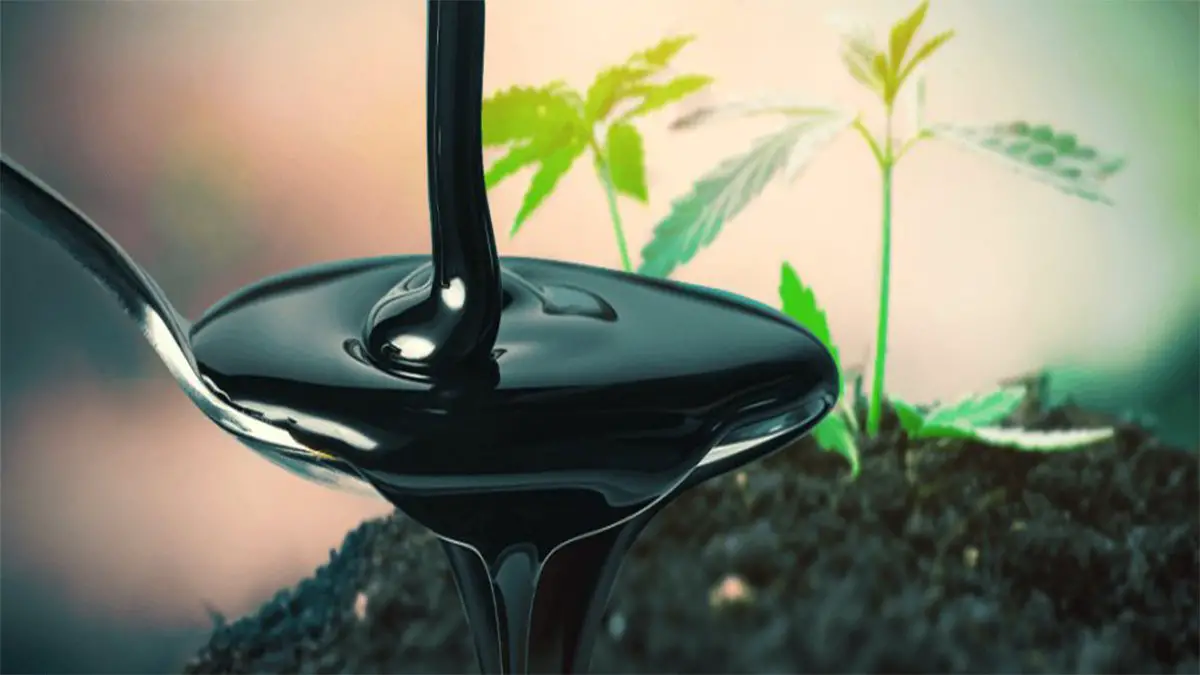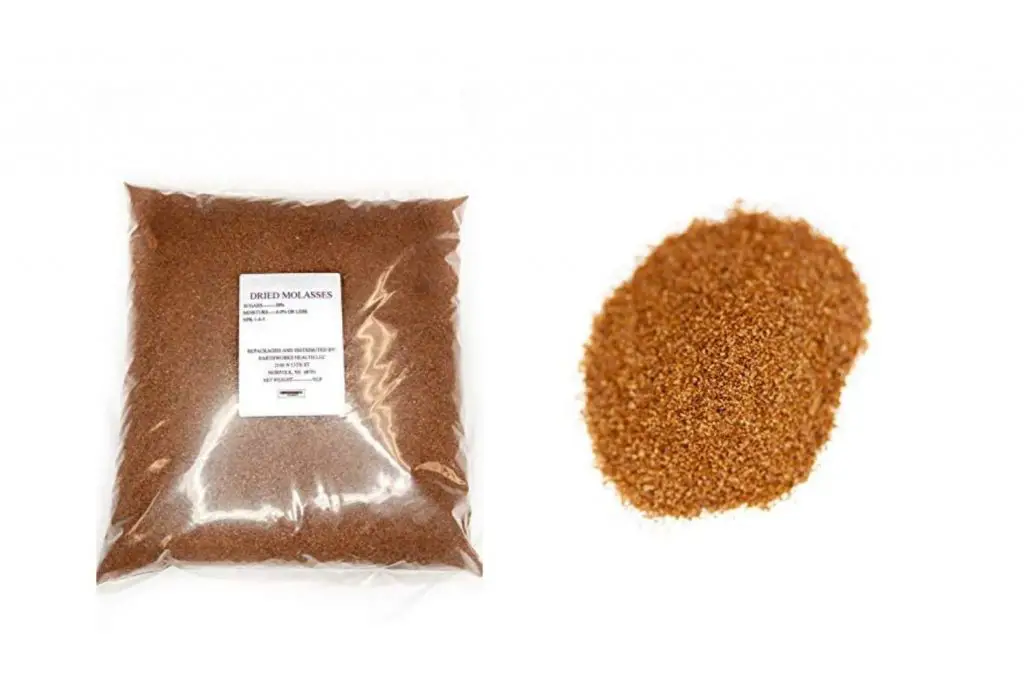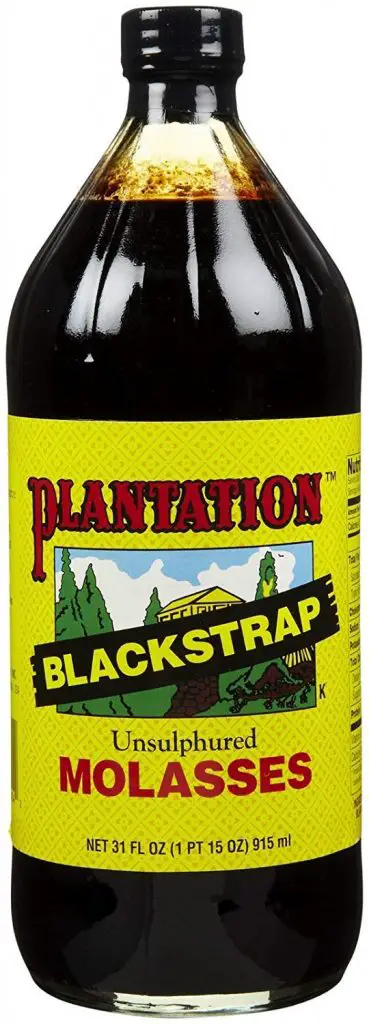When Should I Add Molasses To My Plant

A big shout-out for molasses because of its large contribution to the fertility, disease, insects, and weed control of plants. It’s a great addition to the nutrients of your plants. But, to make the most use of it, you need to know when to add molasses to your plants.
If you’re confused and asking ‘when should I add molasses to my plants?’, then, ‘the time when your plants transit from the vegetative to the blooming stage’ is a one-sentence answer. However, there is a lot you need to know before applying molasses to your plants.
In this article, we’ve tried to come up with every relevant information you need to know about this topic. So, read on, you won’t regret it!
What Exactly Molasses is?
In the simplest words, molasses is an extremely sticky by-product of sugar cane or sugar beet. If you take some raw sugarcane juice and remove the sugar from it, you’ll get two final products- molasses and white sugar.
Molasses is rich in minerals and contains only residual sugar. People also use it as a cooking syrup, and it is rich in carbohydrates for the living, beneficial micro-animals of your soil.
Different Types of Molasses
There are two major divisions of molasses- the first one is the intermediate by-product and the second one is the result of the first sugar crystal extraction. The first kind of molasses comes with 80-85% DM. About the second molasses, here the percentage of DM is the same as the first molasses but has a lesser amount of sugar.
You’ll find another term ‘blackstrap molasses’ in this article, which is the most nutritious type of molasses. During the sugar refinement process, blackstrap molasses is created from the boiled sugar. It also is high in calcium, magnesium, iron, and potassium. Blackstrap molasses helps the beneficial microorganisms to grow.
And, the unsulfured blackstrap molasses is very crucial because there are many products where sulfur is used as a preservative for killing the microbes. But we are not going to let it happen rather we’re trying to increase the number of healthy microbes.
The Perfect Time to Add Molasses to Your Plants
Let’s start with the basic science, your plants need more carbohydrates than their ability to produce, when they are mature and about to bloom.
Molasses work great for the entire life cycle of your plants. However, it’s wise to add molasses to your plants when they are about to transit from the vegetative to the blooming stage. In this stage, your plants need the highest possible sugar level.
The rich nutrients and the extra carbohydrates in molasses help your plants to boost more and produce more flowers. The organisms of your soil need carbohydrates as an effective feeding.
However, if you’re going to grab a jar of molasses and apply it to your plants, let’s get to know some can’t-miss things regarding this topic.
Using Molasses for Your Garden
People have been using molasses for growing their plants for years, it’s been a practice. Molasses contains a huge amount of iron, sulfur, calcium, potassium, and many other micronutrients that work as a quick source of energy for your plants.
Not only these, but the living micro-organisms of the soil also need a high level of carbohydrates in order to help the plants grow.
Molasses is healthy for people for a lot of reasons, plants get benefited from the factors as well. For example, potassium and calcium matters the most when your plant is in the budding and flowering stages. So, molasses is here to bind the nutrients so that your plants can absorb them properly.
If you combine molasses with organic fertilizers, the soil will be rich in the healthy microbes. And, guess what? The more the healthy microbes in the soil, the healthier plant you will get.
However, all molasses are not high-quality, some can be less in quality when they come with additives, preservatives, and other chemicals that are harmful to your plants. The best option is to have the organic molasses but it’s a bit costly.
Why Should You Use Molasses on Plants?
Before you apply molasses to your beloved plants, you should be aware of why you’re going to apply it. Here are the answers.
Molasses is rich in Carbohydrates
Since molasses is nothing but a by-product of the sugar cane or sugar beet, it is a can’t-miss package of carbohydrates that gives the microbes of your soil an instant energy source.
If you regularly supply carbohydrates to the soil, they will be getting more and more beneficial microbes. Therefore, it improves the base quality of your soil. Ultimately, your plants will get more nutrients that are needed for optimal health.
Molasses Contains Trace Minerals
Trace minerals are also crucial for your plants, and molasses comes with a good amount of trace minerals. Iron, sulfur, potassium, and calcium are the source of these trace minerals. These work like a champ to keep your plants healthy.
Molasses Works Like a Chelating Agent
If what chelating agent is your question- there are some nutrients that remain ‘locked’ in your soil that is too hard to absorb by your plants. Molasses makes the job easier by binding the locked nutrients. And, this process is called ‘chelation’.
So, finally, molasses unlocks the nutrients and makes them easy-to-absorb by your plants.
Molasses Prepares and Improves Your Soil
Using liquid molasses is common, but did you know you can enrich the soil before growing plants using dry molasses?
Wait, what is dry molasses? Well, it’s not dried molasses, it’s actually formed with organic bits. More specifically, organic bits like grains have been drenched with molasses. This is an amazing supplement you can combine with your soil.
An average measurement is, you will need about 500g of dry molasses for enriching 4.5-6㎡ of soil.

It Works Like a Natural Insecticide
Molasses works great to keep the pathogens from your soil that are meant to harm the plants. You may say that there is no scientific study where molasses is mentioned as an insecticide. But it’s been proven effective in removing aphids, lace bugs, whiteflies, and other sucking insects.
It Prevents Nutrient Deficiencies and Salt Build-Up
Over time, salt from feeding any non-organic nutrients or minerals can build up in your soil. In the future, those accumulated salt may make a change in the pH level of your soil. It will create issues like preventing your plants from getting enough nutrients any longer.
In this case, using molasses is a wise option because it will not end up building a pile of salt in your soil. For this, there’s no risk that your plants may have any nutritional problems. So, if you regularly add molasses to the plants, they will get everything they need.
How to Apply Molasses on Your Plants
Once you know when and why you should apply molasses to your plants, the next thing you should know is, how to apply it. A soft reminder, you can get the most advantage of molasses only when you mix it with an organic fertilizer. Because the added molasses makes other fertilizer’s nutrients easily absorbable for your plants.
If you are interested in more DIY stuff, go for blackstrap molasses, especially, the unsulfured type. Use this molasses to your fertilizer- take ¼ cup for one gallon. People often spray the solution directly to their plants. But there’s a problem in this case- the remaining of the solutions may attract insects and pests to your grow room.
You can take the most advantages of molasses when you’re using a soil-based system for the plants. It also works for a hydroponic system though, just check its pH in the first place. Because the sugar in the molasses may make things acidic.
When the plants are near to the end of their growing cycle, specifically, prior to 2-3 weeks, do not apply molasses or any other fertilizers to them. Rather, you need to use only water for flushing out the remaining, unused nutrients.
If you find there are any leftover molasses, it’s a good idea to mix it with water and then pour it onto the compost pile. And, about the measurement- use 1 cup molasses per gallon of water. By doing this, you’re ensuring the healthy microbes in there as well.
To sum things up, here’s we have made a how-to process:
- During the vegetative phase- Molasses is not much necessary if you are growing the plants without soil microbes while it’s the vegetative phase of your plants. You can skip applying molasses for this phase. However, use 1 tablespoon of blackstrap molasses (unsulfured) for 1 gallon of water if you are growing with soil microbes.
- During the flowering phase- In this phase, both the soil and the plants will take the advantage of molasses. So, use 1 and 4 tablespoons of blackstrap molasses for 1 gallon of water. However, molasses is a bit acidic and its NPK value is 1-0-5. For this, you need to monitor the soil pH regularly as molasses changes soil pH.
- During the overall growing season- You can combine molasses with milk that is another effective component to protect your plants against diseases like powdery mildew.
This is how you can apply molasses to the compost pile that will work great in building up the mineral nutrients in the soil.
Benefits of Using Molasses for Your Plants
We already have talked about a lot of benefits of using molasses in our plants. Now, here’s a quick-to-check shortlist that shows the benefits.
- Increases the number of healthy microorganisms in your soil.
- Develops the water retention and the structure of your soil.
- Prevents the pathogens from building up.
- Enriches your soil with nutrients like vitamins and minerals.
How Often Should You Feed Molasses to Your Plants?
When it’s the growing season, you can simply use molasses every time you water the plants. In this case, one dose of 1 or 2 tablespoons of molasses in one gallon of water will work well. And, do not forget to keep a look at the pH of your soil since it may affect the range of pH.
Conclusion
There you have it! You now know every relevant information regarding the topic- ‘when should I add molasses to my plants?’ It’s not something tricky to deal with molasses applying it to your plants. All you need is, maintain regularity, and do the measurement carefully.
Molasses work like a blessing to your plants. It enriches the soil and helps your plants to grow bigger buds that ultimately improves the overall growing environment.
So, try your best to follow the instructions properly, and you’ll have an incredibly good result using molasses.
The FAQs About Adding Molasses To Plant
What is the main purpose of using molasses as a plant nutrient?
Well, the main purpose of going with molasses is to supply a high amount of carbohydrates in the soil, feed the beneficial bacteria of your soil, and release a fair amount of carbon dioxide for your plants to absorb.
How much molasses should I use per gallon of water?
Use 1 tablespoon of molasses per gallon of water during the vegetative phase of your plants. And, the flowering phase needs about 1 and 4 tablespoons of molasses per gallon of water.
Should I buy commercial supplements that contain molasses or simply molasses?
Simply molasses will do the job properly at a lower cost. Since both are providing your plants with the same benefits, it’s okay to use simply molasses instead of commercial supplements.
When should I stop using molasses with my plants?
It’s okay to stop using molasses prior to 2-3 weeks you harvest the plants.
Can too much molasses kill my plants?
Yes, using too much molasses can injure or even kill your plants. Free grade molasses sometimes come with antibiotics, fungal inhibitions, preservatives, or extra sulfur that may harm your plants in the long run. So, it’s crucial to be careful about the overall measurement.
Related Plant Health Tips:
- Tiny Black Bugs In Plant Soil
- Black Spots on Succulents- 7 Causes With Cures
- Mint Leaves Turning Brown: Reasons With Remedies
- Problems with Blue Lake Pole Beans
- Strawberry Plants Leaves Are Turning Brown
- Types of Worms in Potted Plants
- How to Use Azamax? – The Complete Guide
- Plant Leaves Turning Brown and Curling up
Happy Gardening!










